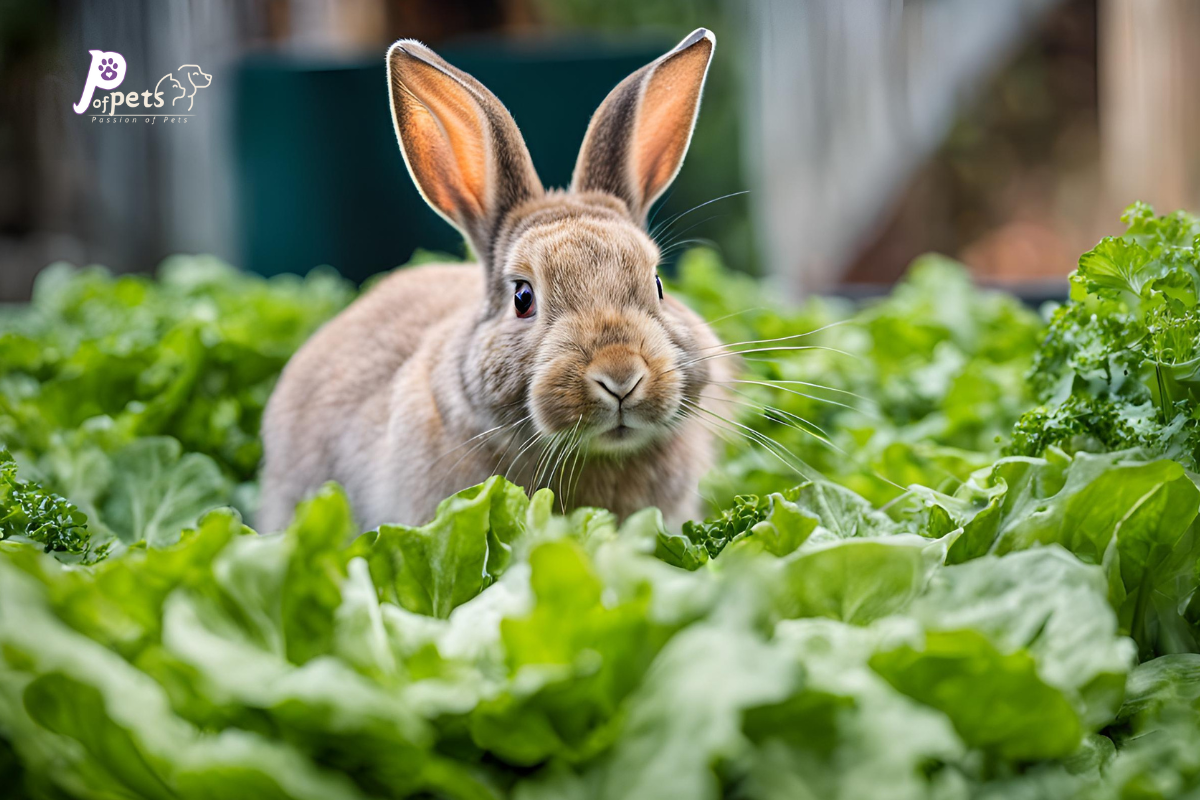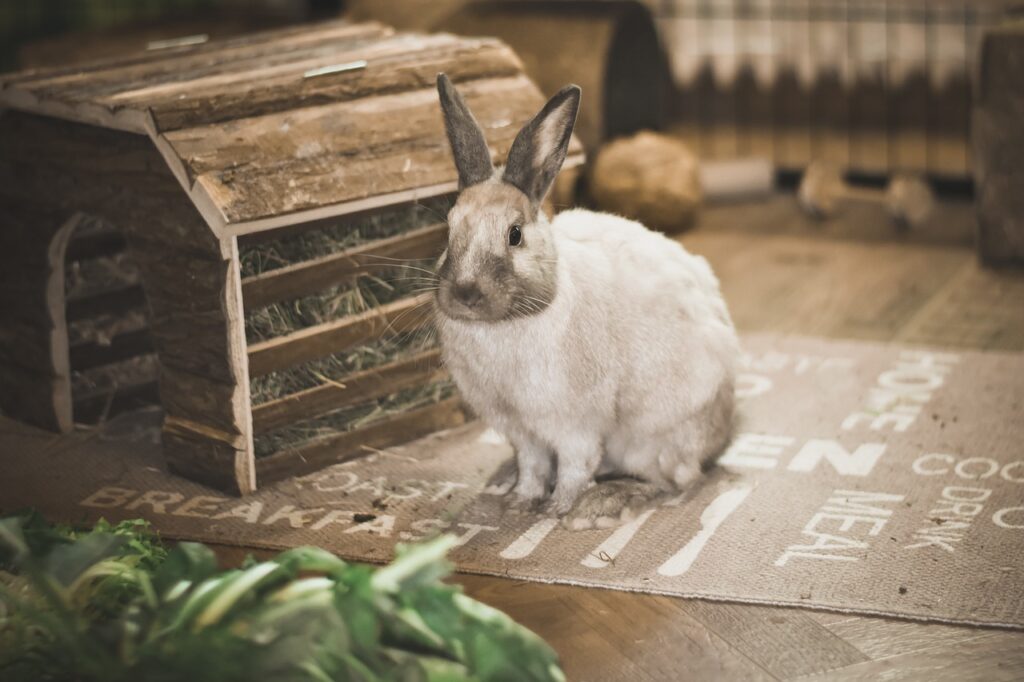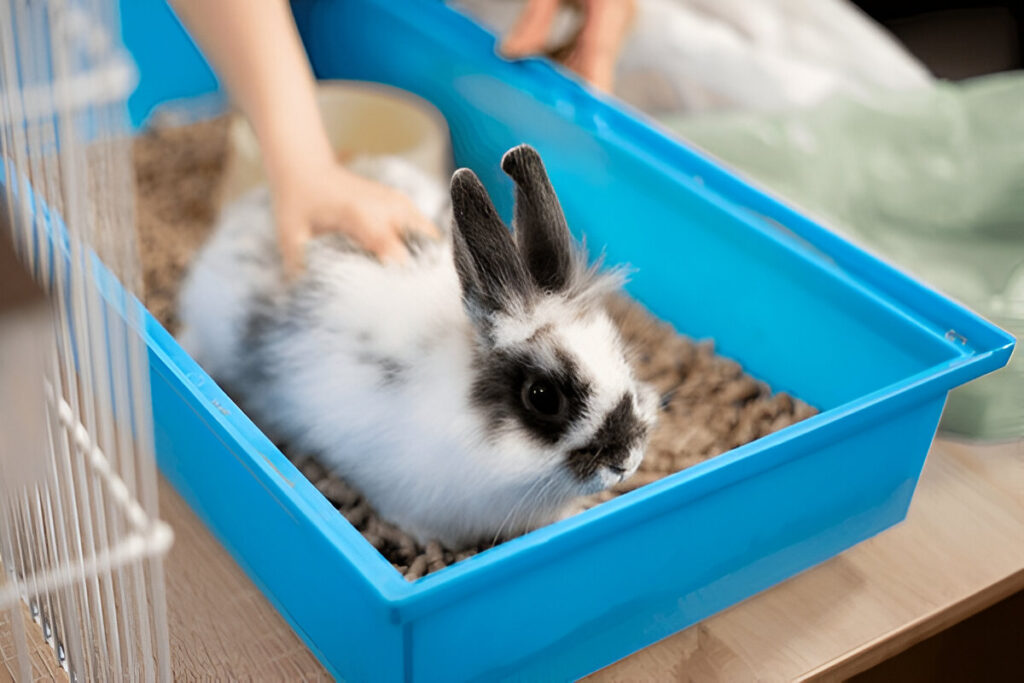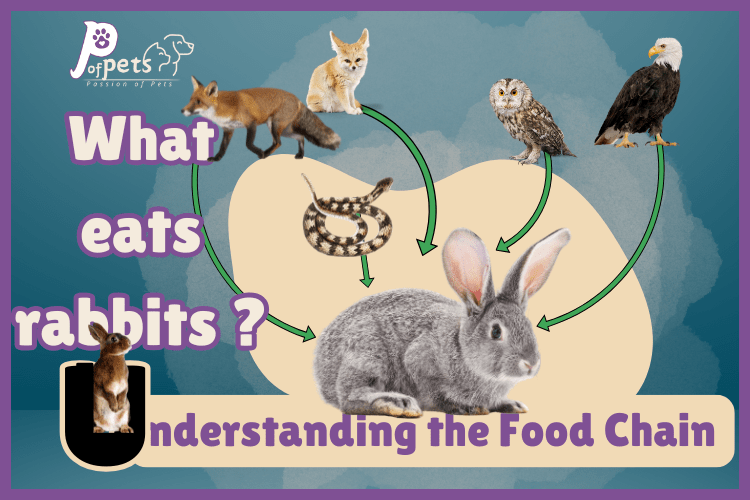Introduction
Rabbits are adorable, fluffy companions that bring joy to any household. As a responsible pet owner, ensuring your rabbit’s diet is nutritious and balanced is crucial for their health and happiness. While hay should make up the majority of their diet, fresh vegetables play a vital role in providing essential vitamins and minerals.
But not all vegetables are safe for rabbits. In this blog post, we’ll explore the best vegetables safe for rabbits, how to introduce them, and tips to keep your bunny hopping with joy.
Why Vegetables Are Important for Rabbits
Rabbits are herbivores, meaning their diet consists entirely of plant-based foods. Fresh vegetables are an excellent source of hydration, fiber, and nutrients like vitamin A, vitamin C, and potassium. They also add variety to your rabbit’s diet, keeping mealtime exciting and stimulating.
However, not all vegetables are created equal. Some can cause digestive issues or even be toxic to rabbits. That’s why it’s essential to know which vegetables are safe and how to incorporate them properly.
Vegetables Safe for Rabbits: A Detailed List

1. Leafy Greens (75% of Fresh Veggie Diet)
Leafy greens are crucial for rabbits because of their high fiber content, low calories, and nutrient-rich profile. Rotate between different types to provide variety.
- Romaine Lettuce: A staple green, rich in vitamin A and water. Avoid iceberg lettuce; it has little nutritional value and can cause digestive issues.
- Kale: Rich in vitamins A, C, and K. Give sparingly, 1-2 times a week, as it contains much calcium that can contribute to the formation of bladder stones if given excessively.
- Spinach: Nutritious, full of iron and antioxidants, but with oxalates. It should be given very rarely-once or twice a week-since it can build up oxalates in the system.
- Arugula: peppery and full of calcium and vitamin K. Great for changing up.
- Bok Choy: Crisp, waterful, packed with vitamins A and C; can be safely given often.
- Endive: Slightly bitter green low in oxalate and high in fiber.
- Dandelion Greens: High-value nutritious forage favorite among rabbits. Shouldn’t have pesticide traces.
- Mustard Greens: Pungent, full of vitamins; needs to be introduced little by little to a rabbit diet.
- Swiss Chard: Although having a good profile regarding the level of vitamins, it does have oxalates, and therefore is usually fed moderately.
- Collard Greens: A great source of calcium and fiber. Offer 2-3 times per week.
- Radish Tops: The leafy greens of radishes are safe and nutritious.
- Beet Greens: Highly nutritious but high in oxalates. Feed in moderation.
2. Non-Leafy Vegetables (15-20% of Fresh Veggie Diet)
These vegetables add texture and variety to your rabbit’s diet. They are higher in sugar or starch, so feed in moderation.
- Carrots: Liked treats, but balance with them due to sugar content. Give them sparsely, like 1 to 2 small pieces per week. Carrot tops, or greens, are very nutritious and can be given more frequently.
- Bell Peppers: Very good source of vitamin C and low in sugar. Seeds and stems need to be removed before serving. All colors, red, yellow, green, are safe.
- Zucchini: A low-calorie, hydrating vegetable. Should be served raw in small pieces.
- Cucumber: High water content, hence hydrating. Skin should be removed unless organic; the skin contains pesticide residue.
- Broccoli: Florets and stems are safe but may give them gas. Given in small pieces, only 1-2 times a week.
- Celery: Crunchy, watery, and nutritious. Remove strings and cut into small sizes to prevent choking.
- Green Beans: Low in calories, high in fiber. Provide fresh and not canned.
- Peas: Pods and peas are safe but high in sugar. Feed sparingly.
- Brussels Sprouts: High in fiber, may cause gas. Offer sparingly.
- Pumpkin: Seasonal treat. Remove seeds and serve small amounts.
- Squash (Butternut, Acorn, Spaghetti): Remove seeds and skin, and serve small amounts.
- Radishes: The root is safe in moderation, but the greens are more nutritious.
- Turnips: The root and greens are safe but in moderation because of the starch content.
3. Herbs (Treats)
Herbs are added flavor and a healthy option to add into your rabbit’s diet. They contain a great deal of antioxidants, which will also help in digestion.
- Parsley: Very good source of vitamin C and iron. Should be given in moderation because of calcium content.
- Cilantro: An aromatic herb, rich in vitamins A and K. Can be given regularly.
- Basil: A fragrant herb; safe and enjoyable to rabbits.
- Mint: Keeps them healthy because it helps digestion and adds freshness to the taste. Should be given in small pieces.
- Dill: Flavorful herb that is safe for rabbits.
- Oregano: Fragrant and safe in small bits.
- Thyme: Fragrant herb; safe for rabbits.
- Rosemary: Safe in small amounts but should be given sparingly because of its strong flavor.
- Sage: Safe in moderation but should not be a staple.
4. Flowers (Occasional Treats)
Some flowers are safe and enjoyable for rabbits. Always ensure they are pesticide-free.
- Dandelion Flowers: Safe and nutritious.
- Marigold: Safe in small amounts.
- Nasturtium: Edible and safe for rabbits.
- Roses: Petals are safe but ensure they are free from pesticides.
5. Vegetables to Avoid
Some vegetables are harmful to rabbits and should never be fed:
- Iceberg Lettuce: Lacks nutrients and can cause diarrhea.
- Potatoes: High in starch and toxic if raw.
- Onions, Garlic, Leeks: Toxic to rabbits and can cause blood disorders.
- Rhubarb: Highly toxic and can be fatal.
- Avocado: Contains persin, which is toxic to rabbits.
- Beans (except green beans): Can cause digestive issues.
- Introduce New Foods Gradually: Always introduce new vegetables one at a time and in small amounts to monitor for any adverse reactions.
- Wash Thoroughly: All vegetables and herbs should be thoroughly washed to remove pesticides and dirt.
- Balance is Key: A rabbit’s diet needs to have a balance of 80% hay, 10% fresh vegetables, 5% pellets, and 5% treats.
- Avoid Overfeeding: Even safe vegetables can cause digestive problems if they are fed in great amounts.
Vegetables to Avoid

While most vegetables are non-poisonous and even quite good for rabbits, there are some that are bad and must be avoided to keep your rabbit healthy. Here’s a closer look at the vegetables and plants which are not good for them and why they must be avoided in their diet:
Potatoes and Potato Leaves
Potatoes are rich in starch and carbohydrates, which are quite hard for rabbits to digest. Feeding potatoes can lead to obesity, digestive issues, and even gastrointestinal stasis, a serious and potentially life-threatening condition. Besides, potato leaves and stems contain solanine, a toxic compound that can harm your rabbit.
Onions, Garlic, Leeks, and Chives
These vegetables are members of the allium family and are poisonous to rabbits. All these vegetables contain N-propyl disulfide, which causes damage to the red blood cells, leading to anemia. Even small amounts over time can cause serious health problems. Symptoms of toxicity include lethargy, weakness, and pale gums.
Iceberg Lettuce
It is very low in nutritional value and is primarily comprised of water. Feeding your rabbit too much can lead to diarrhea and other digestive problems that can quickly cause dehydration. Instead, stick to darker leafy greens such as romaine lettuce, kale, or spinach but give them in moderation.
Rhubarb (Leaves and Stalks)
Rhubarb is extremely high in oxalic acid, which is toxic to rabbits. Rhubarb can cause kidney damage, stomach problems, and even death. The leaves and the stalks should be completely avoided.
Mushrooms
Mushrooms are not a natural part of a rabbit diet and can be toxic. Some types are highly poisonous and create severe health issues. It is best to avoid giving them mushrooms altogether.
Peas
They are high in sugar and starch that may disrupt the digestive system of your rabbit, leading to obesity. Fresh pea pods in small amounts are normally safe, but they should not be part of regular food given to your rabbits.
Beans and Legumes
Beans contain too many proteins and carbohydrates, with which kidney beans and broad beans disagree with a rabbit’s system altogether. It will only build up gases in your bunny, which will end in discomfort. A bit of fresh green beans can be eaten but even they should not regularly form part of the diet.
Tomato Leaves and Stems
While ripe tomatoes are safe in small amounts, the leaves and stems of tomato plants contain solanine, a toxic compound for rabbits. Tomatoes are also high in sugar, so they should only be given as an occasional treat.
Avocado
Avocado is highly toxic to rabbits because it contains a substance called persin, which causes respiratory distress, heart failure, and even death in rabbits. The skin, flesh, and pit of an avocado are all dangerous and should never be fed to rabbits.
Corn and Corn Husks
Corn contains a high level of starch and is poorly digested by rabbits. The outer husks also present the danger of potential choking hazards or bowel obstruction. The rabbits cannot digest corn kernels, which may be fermented in the gut, thus causing severe health complications.
Cabbage, Broccoli, and Cauliflower
While small amounts of these vegetables are not harmful, large amounts can cause gas and bloating in rabbits, which can be painful and may cause gastrointestinal stasis. It’s best to offer these vegetables sparingly.
Spinach
Spinach also contains oxalic acid, and this can depress the absorption of calcium among other minerals and in excess could lead to renal problems like kidney stones. Although it is completely safe in small amounts, it should not be daily food for your rabbit.
General Tips for Feeding Your Rabbit
Keep your rabbit healthy by giving them a diet made up mainly of fresh hay to keep digestion running smoothly and also for the upkeep of their teeth. Add in safe vegetables like romaine lettuce, cilantro, parsley, bell peppers, and carrot tops in moderation. When introducing new foods, do this gradually to prevent digestive upset, and never allow processed or sugary foods in the diet. With a careful balance of not including vegetables that might harm your rabbit, your rabbit will live happily.
How to Introduce Vegetables to Your Rabbit’s Diet

Introducing new vegetables into your rabbit’s diet is an important process and it should be handled with care for your rabbit’s healthy digestive system. Rabbits are sensitive in their stomachs, and sudden changes can cause diarrhea, bloating, or gastrointestinal stasis in them. How to introduce vegetables into your rabbit’s diet safely and effectively is included here in detail.
Start Small
When introducing a new vegetable, begin with a very small portion. A small piece or a single leaf is enough for the first time. This allows your rabbit’s digestive system to adjust to the new food without being overwhelmed. For example, if you’re introducing cilantro, start with just one or two small sprigs.
Introduce One Vegetable at a Time
Only introduce one new vegetable at a time. This makes it easier to monitor your rabbit’s reaction and identify any potential issues. Wait at least 24-48 hours before introducing another new vegetable. This way, if your rabbit has a negative reaction, you’ll know exactly which vegetable caused it.
Monitor Their Reaction
After offering the new vegetable, monitor your rabbit closely over the next 24 hours. Watch for any of the following signs of digestive upset: – Diarrhea or loose stool – Bloating or gas – Lethargy or loss of appetite – Behavioral changes
If any of these symptoms arise, stop feeding the new vegetable right away and consult with your veterinarian. If your rabbit doesn’t show any adverse reactions, you can start increasing the amount over the course of a few days.
Rotate Vegetables for Variety
After a few different types of vegetables are accepted by your rabbit, a periodic rotation should begin. Variety vegetables will allow a range of nutrition for your rabbit as well as prevent food boredom. An example of the rotation is on different days your may wish to offer romaine lettuce one day, cilantro the next day, and another day offer a favorite variety of bell pepper.
Wash Vegetables Thoroughly
Always wash vegetables thoroughly before providing them for your rabbit. This removes dirt and pesticides, as well as other contaminants that can harm your rabbit. When organic vegetables are available, it is best in order to minimize pesticide exposure. For the leafy vegetables, rinse them under cold water and pat them dry before serving.
Remove Uneaten Vegetables
Rabbits are grazers, but fresh vegetables spoil quickly if left uneaten. Remove any uneaten vegetables from your rabbit’s enclosure after a few hours to prevent spoilage and bacterial growth. This is particularly important during warm weather when vegetables can wilt or rot more quickly.
Stick to Rabbit-Safe Vegetables
When introducing new foods, always select vegetables that are safe for rabbits. Some rabbit-safe options include:
Leafy greens: Romaine lettuce, cilantro, parsley, kale (in moderation), and dandelion greens.
Herbs: Basil, mint, and oregano.
Other vegetables: Bell peppers, zucchini, and carrot tops.
Vegetables to avoid are those high in sugar, starch, or oxalic acid because these can cause health problems.
Balance Vegetables with Hay and Pellets
Though vegetables play a great role in your rabbit’s diet, they should not displace the main components: hay and pellets. Fresh hay- for instance, timothy hay-should constitute about 80% of your rabbit’s diet due to the role it plays in digestion and dental health. High-quality pellets can be given in small amounts, and vegetables should be given as a supplement.
Do Not Overfeed Vegetables
Even safe vegetables should be given in moderation. Overfeeding vegetables can cause digestive problems or nutritional deficiencies. A general rule of thumb is to feed approximately 1 cup of fresh vegetables per 2 pounds of body weight daily. Divide this into two servings, one in the morning and one in the evening.
Be Patient and Consistent
Some rabbits are selective and do not immediately take up new food, especially if it is their first time trying a vegetable. Be patient and offer the new vegetable consistently over a period of days. You can mix with a vegetable they already like to entice them.
Tips for a Balanced Rabbit Diet

A balanced diet is crucial for your rabbit to be healthy, happy, and thriving. Rabbits have particular dietary needs which must be met to further their digestion, dental health, and general well-being. The explanation of the components of the balanced diet for the rabbit is detailed in this section, and within is a table summarizing the key elements.
Components of a Balanced Rabbit Diet
1. Hay (80-90% of Their Diet)
Hay is the most critical component of a rabbit’s diet and makes up a greater part of the daily intake. This is because hay provides essential fiber that keeps the gut healthy and helps avoid serious gastrointestinal stasis. Hay will help grind continuously erupting teeth to prevent dental issues.
- Types of Hay:
- Timothy Hay: Most available, and recommended, type for adult rabbits.
- Orchard Grass: Good alternative hay to Timothy.
- Oat Hay: This can be given to them as a sort of treat or as nutritional supplementation.
- Alfalfa Hay: This contains a very high amount of calcium and protein and should be used only for young growing rabbits or for pregnant/nursing females. To be avoided by adult rabbits altogether.
- Feeding Hay:
- Provide fresh hay all the time.
- Provide them with a clean hay rack or feeder for that purpose.
2. Fresh Vegetables (10-15% of Their Diet)
Fresh vegetables provide them with very important vitamins, minerals, and water. They have to be given daily but in small amounts to prevent digestive problems.
- Vegetables that Are Safe:
- Leafy Greens: Romaine lettuce, cilantro, parsley, kale (in moderation), and dandelion greens.
- Herbs: Basil, mint, and oregano.
- Other Vegetables: Bell peppers, zucchini, and carrot tops.
- How to Offer Vegetables:
- Introduce new vegetables gradually in a one-at-a-time manner.
- Always wash them well to remove pesticide and dirt residues.
- Offer a variety to ensure a balanced nutrient intake.
- Remove uneaten vegetables after a few hours to prevent spoilage.
3. Pellets (5% of Their Diet)
Pellets make for a supplementary part of a rabbit’s diet and shall be provided in small quantities. They contain concentrated nutrients but are not a substitute for hay or fresh vegetables.
- Choosing Pellets:
High-quality pellets should not contain any added sugars, seeds, or colorful bits.
The pellet must have at least 18% fiber and low protein, which should be within the range of 12-14%.
Timothy hay-based pellets are good to go for adult rabbits. - How to Offer Pellets:
About 1/4 cup of pellets per 5 pounds of body weight daily.
Avoid overfeeding; too many pellets will lead to obesity and stomach problems.
4. Fresh Water
Fresh, clean water is essential for your rabbit’s health. Rabbits should always have water because they continuously dehydrate themselves and need it to help in digestion.
- How to Provide Water:
- Clean water bowl or bottle.
- Change the water daily and clean the container regularly to prevent bacteria buildup.
- Make sure that water is always available, but especially when it’s hot outside.
Table: Summary of a Balanced Rabbit Diet
| Component | Percentage of Diet | Details |
|---|---|---|
| Hay | 80-90% | Timothy hay, orchard grass, or oat hay. Always available. |
| Fresh Vegetables | 10-15% | Leafy greens, herbs, and safe vegetables. Offer daily in moderation. |
| Pellets | 5% | High quality, Timothy hay-based pellets. Avoid ones with sugar or seeds in them. |
| Fresh Water | Always available | Clean water provided daily in a bowl or bottle. |
- Avoid Sweet Treats: Fruits like apples, bananas, and berries may be given as treats but in very limited amounts, not to exceed 1-2 tablespoons per week, because of their high sugar content.
- Limit Starchy Foods: Avoid giving starchy or high-carbohydrate foods such as bread, crackers, or cereals because these can interfere with digestion.
- Monitor Weight: Regularly check your rabbit’s weight to ensure they are not becoming overweight or underweight. Adjust their diet as needed.
- Provide Enrichment: Use hay-based toys or foraging mats to encourage natural grazing behavior and mental stimulation.
- Consult a Veterinarian: If you’re unsure about your rabbit’s dietary needs or notice any health issues, consult a rabbit-savvy veterinarian for guidance.
Frequently Asked Questions
1. How much vegetables should I feed my rabbit?
A good rule of thumb is to provide about 1 cup of fresh vegetables per 2 pounds of body weight daily.
2. Can rabbits eat fruits?
Yes, but fruits should be given as an occasional treat due to their high sugar content. Safe options include apples (without seeds), blueberries, and strawberries.
3. What if my rabbit refuses to eat vegetables?
Some rabbits are picky eaters. Try offering different types of vegetables or mixing them with their favorite herbs.
Conclusion
Feeding your rabbit a diet rich in safe vegetables is one of the best ways to ensure their health and happiness. By incorporating a variety of leafy greens, non-leafy vegetables, and herbs, you can provide your bunny with the nutrients they need to thrive. Remember to introduce new foods gradually and always monitor their reaction.
Ready to give your rabbit the best care possible? Start by adding some of these safe vegetables to their diet today! Share your bunny’s favorite veggies in the comments below, and don’t forget to subscribe to our newsletter for more pet care tips.
Yuns Legdm is a passionate advocate for pet care and the founder of this website, dedicated to providing valuable information for fellow pet lovers and veterinary professionals worldwide. With a deep love for animals, Yuns created this platform to connect passionate pet owners with expert insights from veterinarians around the globe.
This website grows with you—the passionate pet owners and veterinary experts—creating a trusted space where knowledge, experience, and love for animals come together. Whether you’re seeking advice on pet health, nutrition, or general well-being, this platform is here to support you on your journey of responsible and loving pet care.





